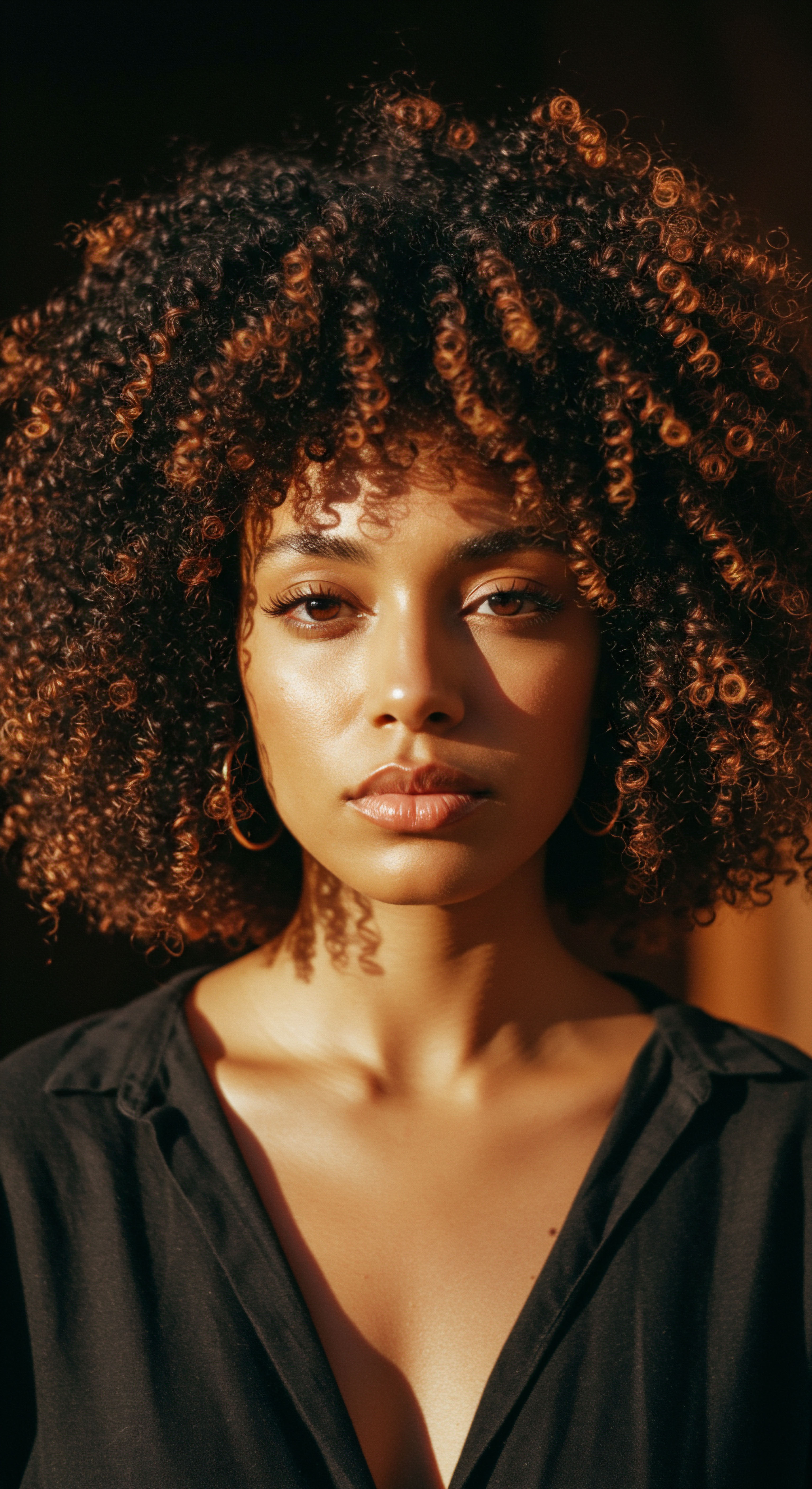
Roots
Consider, for a moment, the quiet wonder held within a single strand of hair. It is a story whispered from ancestors, a delicate yet resilient fiber that carries echoes of heritage and journeys across time. For those with textured hair, this narrative is particularly rich, often defying simple categorization.
While the world frequently attempts to fit our coils into neat boxes, understanding the nuances of Type 4 hair—the intricate distinctions between 4a, 4b, and 4c—unveils a deeper appreciation for its inherent strength and singular beauty. This exploration is not about rigid labels, but about gentle recognition, allowing us to celebrate each curl, each coil, as a unique expression of self.
Type 4 hair, often referred to as coily or kinky, stands apart in its magnificent density and tight curl formations. These strands grow from follicles that are typically flat and oval, emerging from the scalp in a manner parallel to the skin surface. This unique growth pattern, coupled with the hair fiber’s structure, contributes to its distinctive appearance and characteristics.
The tight coiling means that the natural oils produced by the scalp, known as sebum, face a considerable journey to descend the entire length of the hair shaft. This physiological reality explains why Type 4 hair often leans towards dryness, requiring thoughtful care to maintain its supple nature.
Type 4 hair, with its remarkable density and tight coils, presents a distinct beauty that calls for understanding its unique physiological needs.
Within the broad canopy of Type 4, three distinct subcategories beckon our attention ❉ 4a, 4b, and 4c. Each possesses its own charming qualities, a subtle variation in the symphony of coils. These classifications, while helpful guides, are not absolute boundaries; individuals frequently possess a blend of these textures across their scalp, a personal mosaic reflecting the spectrum of human hair.
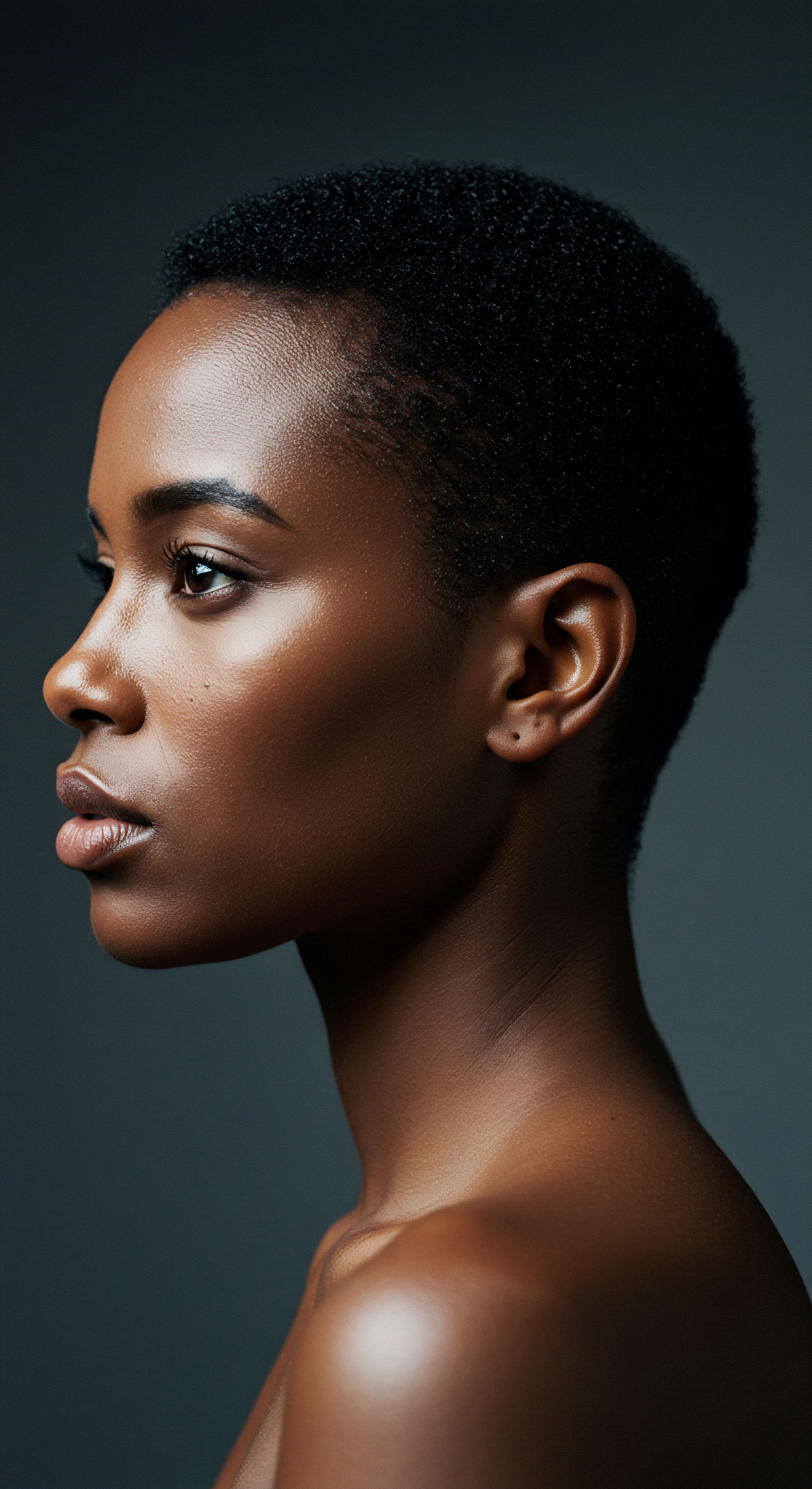
Understanding Type 4a Hair
Type 4a Hair greets the world with a vibrant, spring-like quality. Its coils are often described as having a distinct ‘S’ shape, much like a tiny, tightly wound spring or a crochet needle. These coils are typically well-defined, allowing for a visible curl pattern even without extensive manipulation. Despite its definition, 4a hair retains a soft and often fine texture, though its overall appearance is one of considerable volume and density.
This particular type exhibits significant shrinkage, where the hair appears much shorter when dry than its actual length when wet. It possesses a better capacity for retaining moisture compared to its tighter counterparts, 4b and 4c, yet it still demands consistent hydration to stay supple and resist breakage.
- Coil Pattern ❉ Features a discernible ‘S’ shape, creating springy, defined ringlets.
- Density and Volume ❉ Often dense with considerable volume, even from the root.
- Shrinkage ❉ Experiences substantial shrinkage, making dry length appear shorter than wet length.

Exploring Type 4b Hair
Moving along the spectrum, Type 4b Hair presents with a more angular, often ‘Z’ shaped curl pattern. The coils are tighter than 4a, and their definition is less pronounced, sometimes appearing more like a concentrated bend or kink rather than a smooth spiral. When wet, the Z-shape can become more apparent. This hair type tends to be quite dense and can feel wiry to the touch, though individual strands may still be fine.
The challenges of moisture distribution are more pronounced here, as the sharp angles of the coils make it harder for natural oils to travel down the shaft. Consequently, 4b hair is more susceptible to dryness and requires diligent moisturizing practices. Its tendency for shrinkage is also quite high, often exceeding that of 4a.

Distinguishing Type 4c Hair
At the apex of the Type 4 classification stands Type 4c Hair, a truly magnificent display of tightly coiled texture. This subcategory is characterized by an extremely dense, compact curl pattern that often lacks visible definition without purposeful styling. The coils are so tight and closely interlocked that they can appear as a soft, cotton-like mass, with little to no discernable ‘S’ or ‘Z’ pattern in its natural, unmanipulated state. Type 4c hair exhibits the highest degree of shrinkage among all hair types, sometimes appearing up to 70-80% shorter when dry than its stretched length.
This remarkable quality also contributes to its inherent fragility. Due to the extreme coiling, it is the most prone to dryness and tangling, necessitating the most gentle and consistent approach to hydration and detangling.
Each of these subcategories, 4a, 4b, and 4c, represents a unique expression of coily hair, each with its own gifts and its own particular needs for nurturing. Understanding these distinctions serves as a compass, guiding us toward the most harmonious practices for our individual strands.

Ritual
Stepping into the realm of daily care for Type 4 hair is akin to learning a delicate dance, one that honors the unique rhythm of each coil. It moves beyond simple washing and conditioning; it is a ritual of mindful hydration, patient detangling, and protective styling. For those who walk this path, the practices become an intimate conversation with their strands, a testament to resilience and beauty. This segment guides us through the practical wisdom, offering gentle insights into the daily and periodic rhythms that help Type 4 hair truly thrive.
The foundation of any healthy Type 4 hair regimen rests upon moisture. Because of the tightly coiled structure, which makes it challenging for natural scalp oils to travel down the hair shaft, external hydration becomes paramount. Regular deep conditioning treatments are not merely a luxury but a fundamental component of maintaining suppleness and elasticity. These treatments help to replenish the hair’s moisture reservoirs, making strands more pliable and less prone to breakage.
Consistent moisture, through deep conditioning and gentle handling, forms the cornerstone of healthy Type 4 hair care.
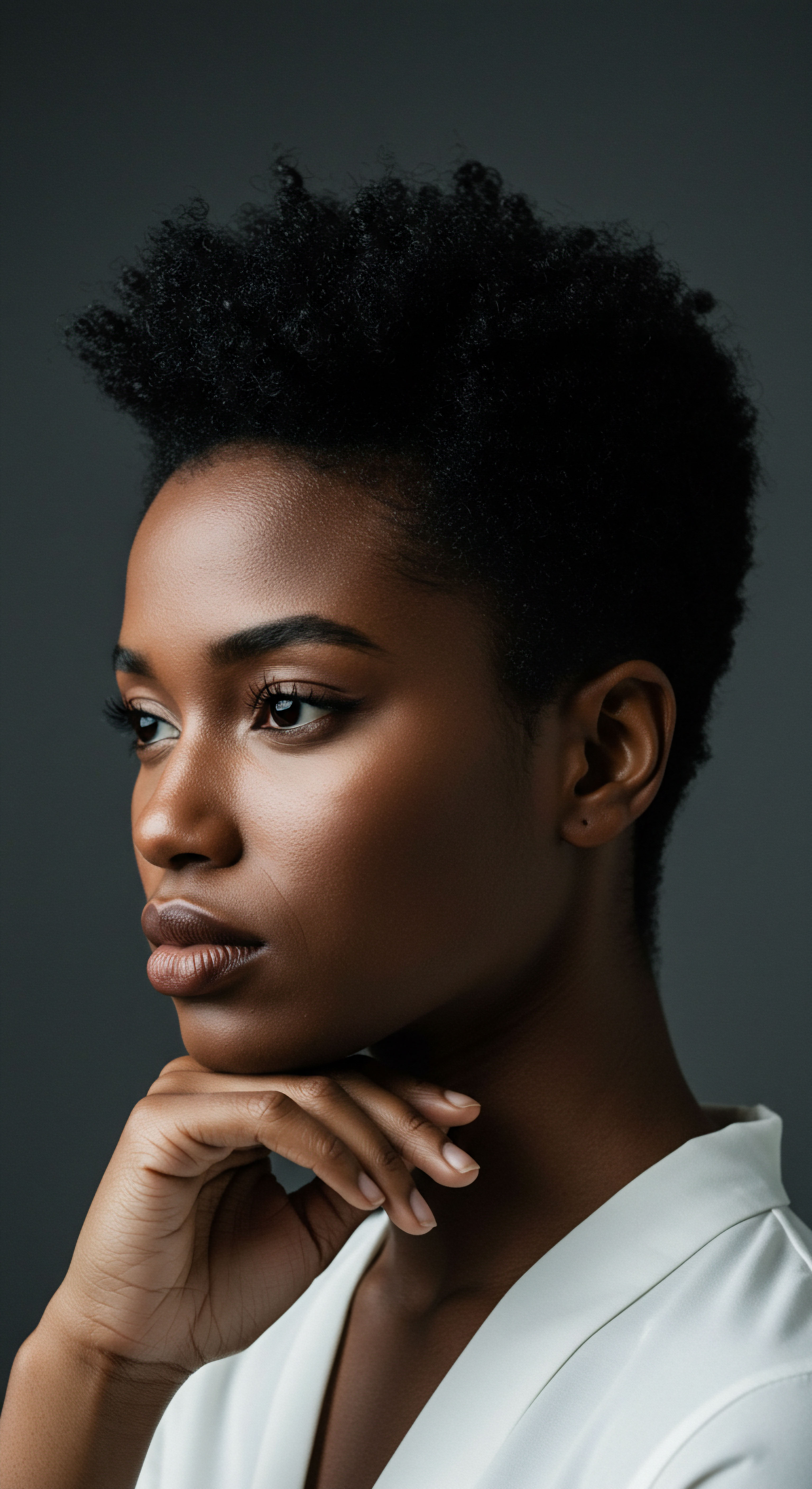
Gentle Cleansing and Conditioning
The act of cleansing Type 4 hair calls for a thoughtful approach. Harsh sulfates can strip the hair of its already limited natural oils, leading to excessive dryness. Opting for sulfate-free, moisturizing shampoos or co-washes allows for effective cleansing without compromising the hair’s delicate moisture balance.
The detangling process, a significant part of the wash day ritual, is best performed on wet hair, saturated with a slippery conditioner. Working in small sections, using fingers or a wide-tooth comb, helps to minimize tension and prevent breakage.
For 4a Hair, which often maintains some visible curl definition, a “wash and go” style can be achieved with the right products that encourage curl clumping. However, even with its better moisture retention, regular deep conditioning, perhaps every one to two weeks, remains a wise practice. The springy coils of 4a hair benefit from products that offer a balance of moisture and light hold, allowing the natural pattern to shine without being weighed down.
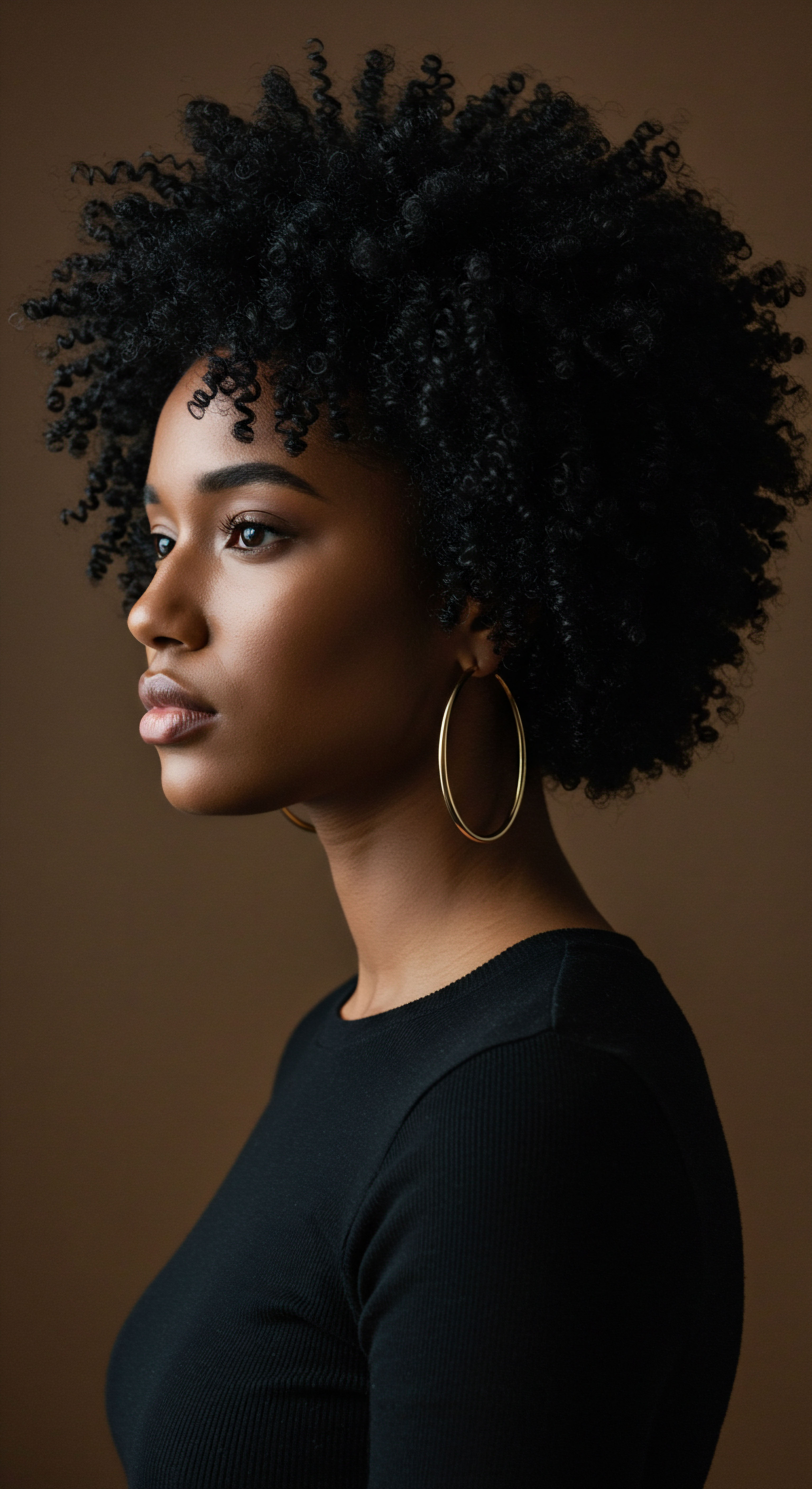
Hydration Strategies for Tighter Coils
Type 4b Hair, with its less defined, angular Z-patterns, demands a more focused hydration strategy. Due to its propensity for dryness, bi-weekly shampooing with a cleansing conditioner in between might suit some individuals, while others may benefit from weekly washing. The application of leave-in conditioners and moisturizing creams becomes even more critical for 4b coils to maintain their softness and prevent tangling. The LOC (Liquid, Oil, Cream) or LCO (Liquid, Cream, Oil) methods are popular moisture retention techniques that can significantly help lock hydration into these strands.
For Type 4c Hair, the most delicate and prone to shrinkage, moisture is the very breath of its existence. Its tightly interlocked zig-zag pattern means that natural oils struggle most to reach the ends, making it inherently dry and susceptible to breakage. Daily moisturizing with water-based products, followed by a sealant (oil or butter), is often a daily necessity.
Detangling 4c hair requires the utmost patience and gentleness, always on wet or damp hair, preferably with a conditioner offering considerable slip. Sectioning the hair into very small parts before detangling can significantly reduce friction and prevent knots.
| Hair Type 4a Hair |
| Key Moisture Approach Regular deep conditioning (1-2 weeks), balanced leave-ins. |
| Detangling Guidance Wet detangling with conditioner, can clump easily. |
| Hair Type 4b Hair |
| Key Moisture Approach Focused hydration, LOC/LCO methods, bi-weekly washing or co-washing. |
| Detangling Guidance Gentle wet detangling in sections, use ample slip. |
| Hair Type 4c Hair |
| Key Moisture Approach Daily water-based moisturizing and sealing, frequent deep conditioning. |
| Detangling Guidance Extreme gentleness, small sections, saturated with conditioner. |
| Hair Type Adapt these rituals to your hair's unique response and environmental conditions. |
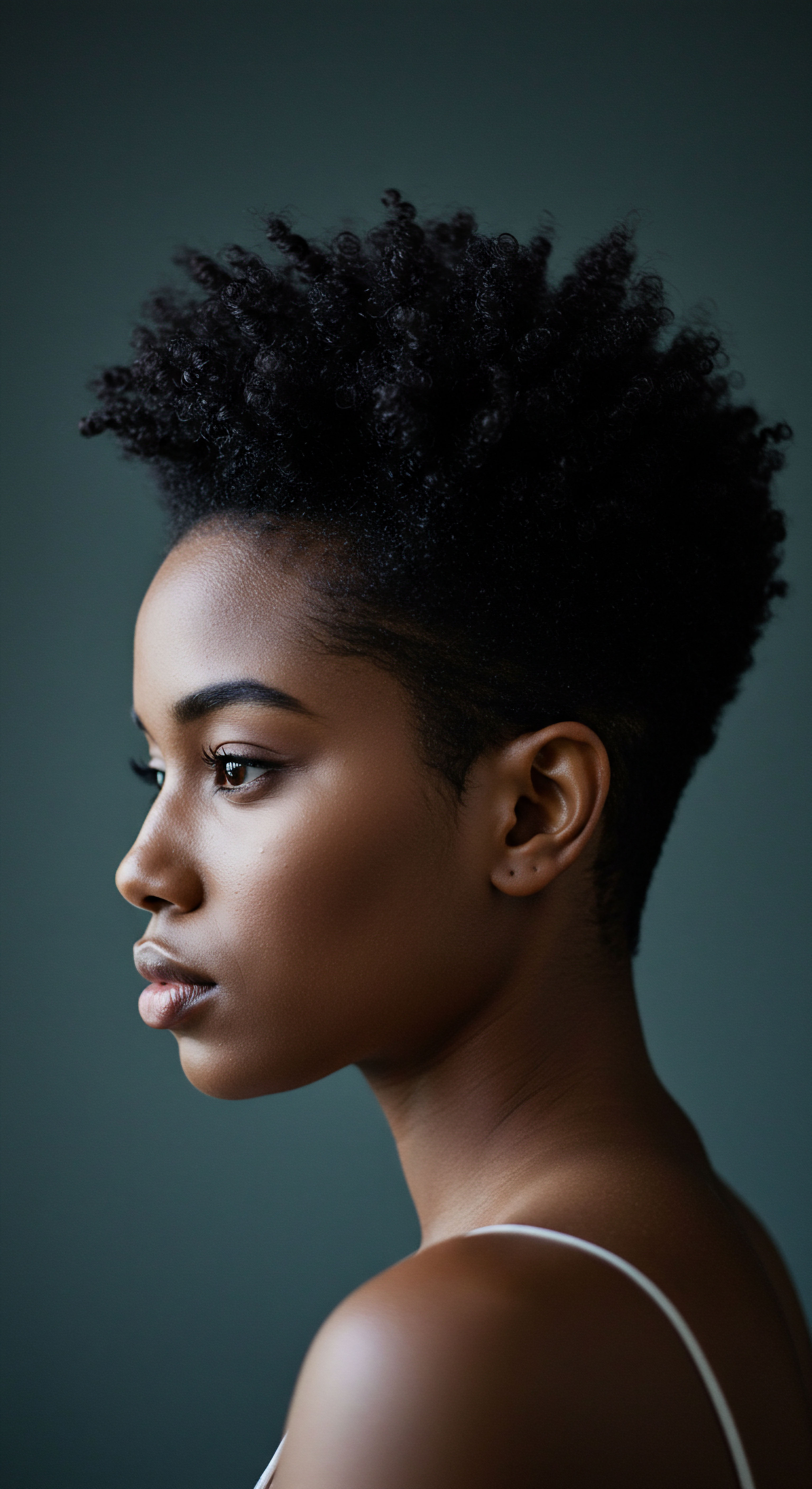
Protective Styling and Nighttime Care
Protective styles, such as braids, twists, or Bantu knots, play a significant role in minimizing manipulation and protecting the fragile ends of Type 4 hair from environmental stressors. These styles help to retain length by reducing breakage, allowing the hair to rest and grow.
The nighttime ritual holds a special place in the care of Type 4 hair. Sleeping on a silk or satin pillowcase, or covering the hair with a silk or satin bonnet, creates a sanctuary for your strands. Unlike cotton, which can absorb moisture and create friction, silk and satin allow the hair to glide, preserving its hydration and preventing tangles and breakage. This simple yet profound practice protects the integrity of the hair, ensuring that the efforts of your daytime regimen are not undone by the night.
Ultimately, the ritual of caring for Type 4 hair is a continuous learning process, an invitation to listen to your hair’s whispers and respond with kindness and knowledge. It is in these consistent, gentle acts that the true radiance of coily textures shines through.
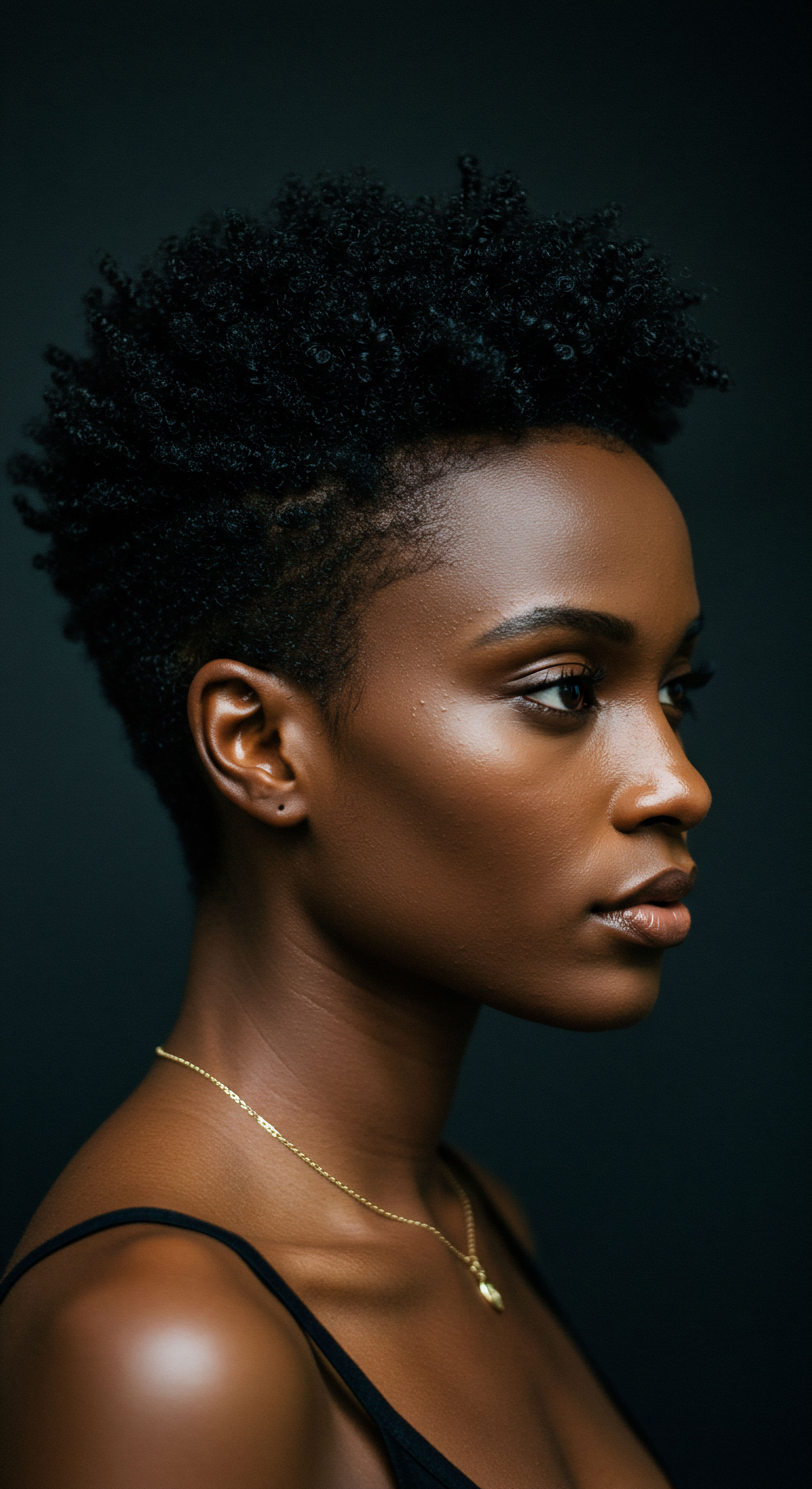
Relay
As we deepen our conversation around Type 4 hair, we move beyond the visible curl pattern to explore the intricate layers of its scientific makeup and the profound cultural echoes that shape its experience. The journey into 4a, 4b, and 4c is not merely about visual classification; it is an invitation to consider the biological complexities, the historical context, and the psychological impact that collectively define this magnificent hair type. Here, we delve into research that illuminates its unique properties and challenges the very frameworks we use to understand it.
Scientific inquiry into hair, particularly textured hair, has historically faced limitations. Much of the early research focused on straight or wavy hair, leaving a knowledge gap concerning the distinct properties of coily strands. However, a new generation of scientists is bringing quantitative rigor to this field. For instance, studies are exploring the mechanical properties of coily hair, identifying unique characteristics.
Unlike straight hair, which primarily exhibits an elastic region when stretched, curly and kinky hair fibers display an initial “toe region” in their stress-strain curves. This “toe region” signifies the force required to uncurl the natural morphology of the fiber before it begins to stretch elastically. This distinct mechanical response indicates that coily hair stores mechanical energy, contributing to its remarkable springiness and resilience, This inherent spring, while a testament to its unique structure, also contributes to its perceived fragility, as the tight coiling can lead to more points of potential stress along the fiber.
The mechanical properties of coily hair, including its unique “toe region” during stretching, reveal a complex structure that contributes to its characteristic springiness.

Challenges in Hair Classification
The widely recognized Andre Walker hair typing system, while a popular guide, has drawn critique for its qualitative nature and for potentially oversimplifying the vast diversity within Type 3 and Type 4 hair, sometimes inadvertently reinforcing hierarchies that favor looser curl patterns, The system’s limitations become apparent when considering the subtle yet significant differences between 4a, 4b, and 4c, which are often characterized by varying degrees of tightness and definition rather than fundamentally different curl shapes. Researchers are proposing new, more quantitative classification methods, such as those based on measuring the number of contours (curls or coils) within a given length of hair or incorporating parameters like shrinkage, which is a significant aspect of Type 4 hair, For example, 4c hair can experience up to 70-80% shrinkage, making its true length considerably different from its apparent dry length,
| Characteristic Curl Definition |
| 4a Hair Visible 'S' pattern, springy ringlets. |
| 4b Hair Tight 'Z' pattern, less defined, more angular. |
| 4c Hair Extremely tight, no visible pattern without manipulation. |
| Characteristic Shrinkage |
| 4a Hair High (up to 60%). |
| 4b Hair Very High (often up to 70%). |
| 4c Hair Highest (up to 80% or more). |
| Characteristic Fragility |
| 4a Hair Prone to dryness and breakage. |
| 4b Hair More prone to dryness and tangling. |
| 4c Hair Most fragile, highly prone to dryness and tangling. |
| Characteristic Moisture Retention |
| 4a Hair Better than 4b/4c, but still needs consistent hydration. |
| 4b Hair Challenges in moisture distribution. |
| 4c Hair Most challenging, requires diligent daily hydration. |
| Characteristic These are general tendencies; individual hair characteristics can vary. |
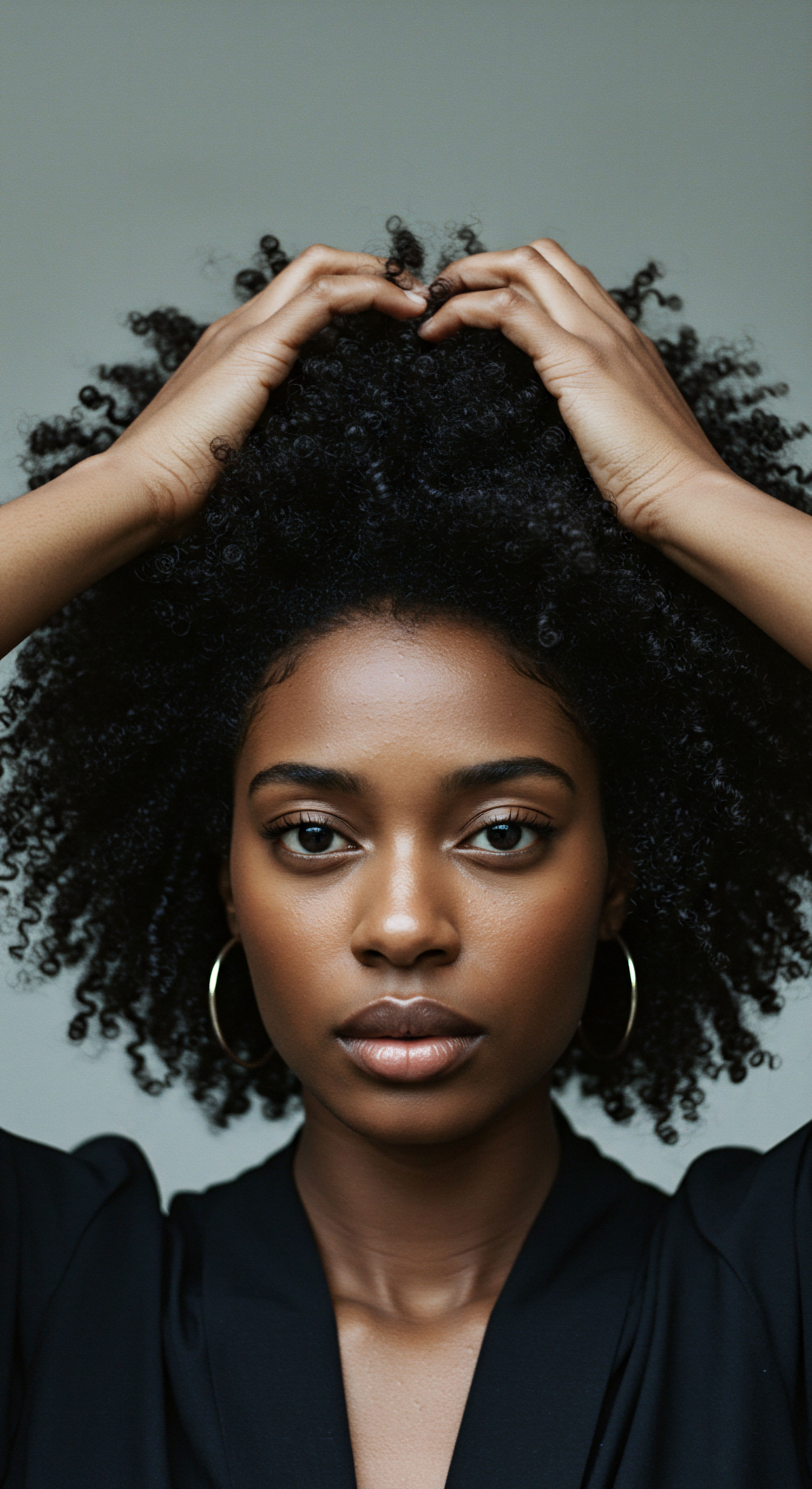
Beyond Physicality ❉ Hair Esteem and Identity
The conversation surrounding hair type extends far beyond its physical attributes. Hair plays a profound role in self-perception, identity, and social interaction, particularly within Black communities. Historically, hair texture has been linked to racial classifications, and unfortunately, systems like the Andre Walker chart have sometimes been perceived as perpetuating texturism—discrimination that favors looser curl patterns over tighter, coily textures. This societal bias can lead to internalized racial oppression, where media portrayals of beauty can negatively impact how Black women view their own hair.
A study exploring the experiences of Black South African women, using a mixed-method approach including Subjective Evidence-Based Ethnography (SEBE) and an online survey, yielded a particularly illuminating insight. This research indicated that while physical hair characteristics are observed, the subjective perceptions and personal goals related to hair are actually stronger predictors of an individual’s Hair Esteem than objective characteristics like hair length or even curl type, This suggests that how one feels about their hair, their personal hair aspirations (aesthetic, haptic, practical, and emotive goals), carries more weight in their overall self-perception than the mere physical classification of their coils. This finding underscores the deeply personal and cultural significance of hair, reminding us that its meaning is constructed not only by its biological form but also by the narratives and values we attach to it.
This understanding challenges us to move beyond purely scientific categorizations and to consider the holistic experience of textured hair. It compels us to acknowledge that while understanding the scientific distinctions of 4a, 4b, and 4c is valuable for product development and care strategies, the true measure of hair health and beauty also lies in the individual’s connection to their coils, their personal rituals, and the cultural context that shapes their journey. The societal pressures and historical biases around hair texture are real, impacting self-esteem and well-being, Therefore, discussions about hair types must always be held with sensitivity, respect, and a recognition of the broader human experience.
The scientific exploration of Type 4 hair continues to grow, moving towards more precise, quantitative measurements that can truly capture its unique properties. This scientific progress, coupled with a compassionate understanding of its cultural and psychological dimensions, promises a future where every coil is not only understood but truly celebrated.
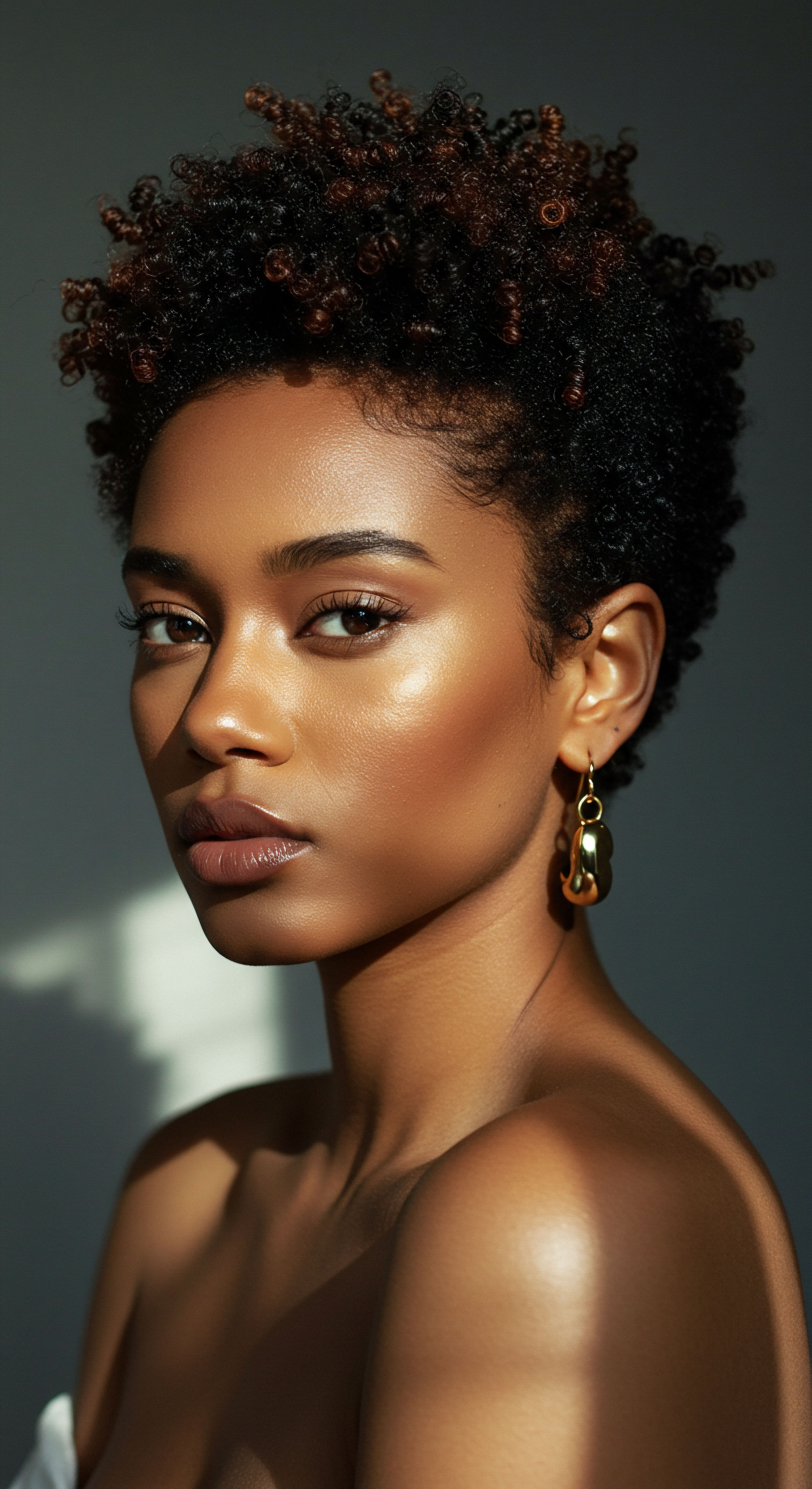
Reflection
As our exploration of Type 4 hair draws to a close, we find ourselves standing at a crossroad where scientific understanding meets the profound beauty of personal identity. The journey through 4a, 4b, and 4c reveals not just a spectrum of curl patterns, but a rich landscape of resilience, history, and self-expression. Each coil, whether a springy ‘S’, an angular ‘Z’, or an undefined cloud, carries a unique story, a testament to the remarkable adaptability of natural hair.
The wisdom gathered, from the delicate dance of moisture retention to the quiet strength found in protective styles, underscores a singular truth ❉ textured hair demands a reverence, a thoughtful engagement that transcends superficial categorization. It is a call to listen to our strands, to honor their inherent needs, and to move with gentle intention in their care. In this ongoing dialogue with our hair, we not only nurture its health but also deepen our connection to ourselves and the vibrant heritage it represents.
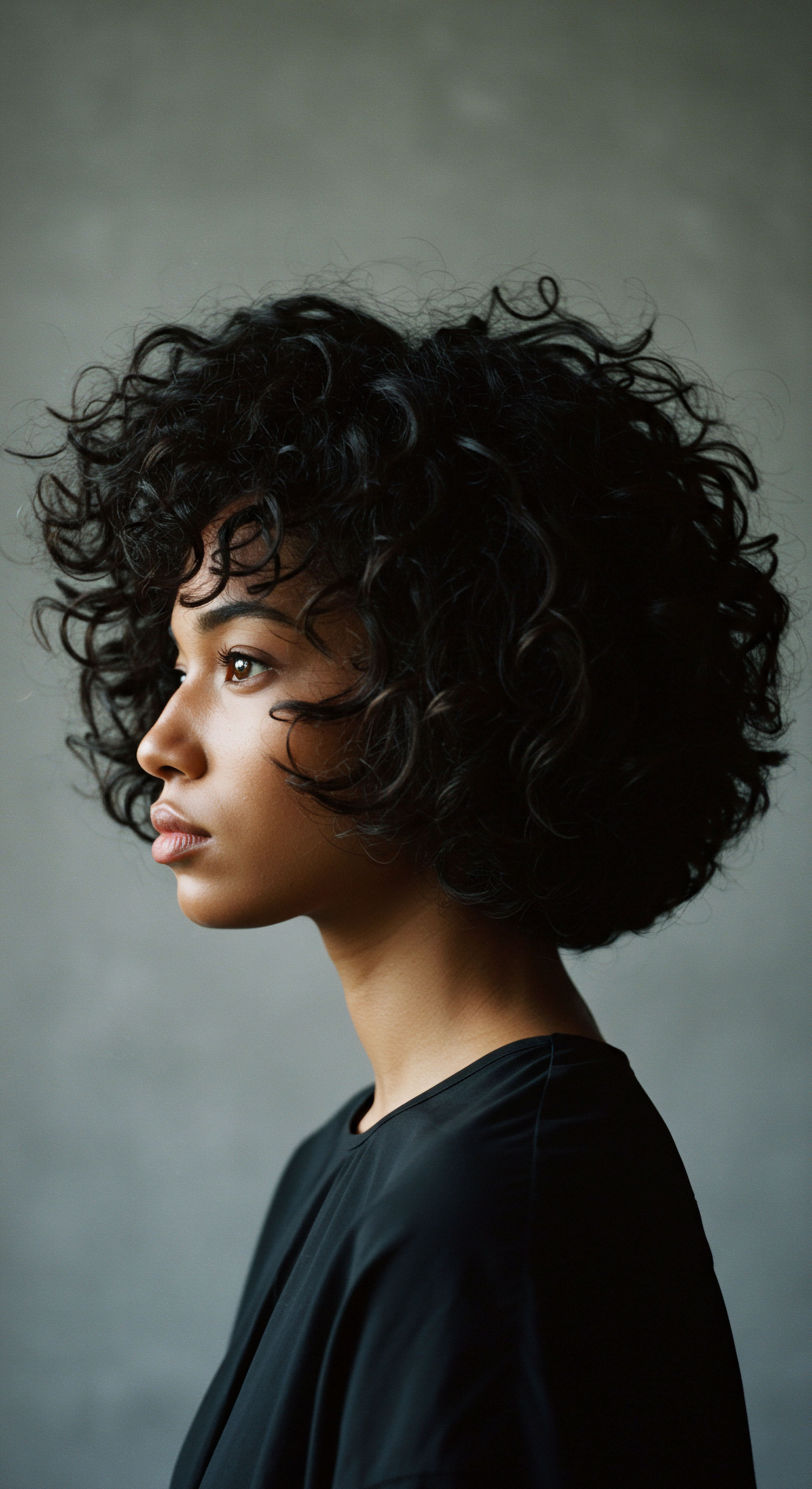
References
- Gaines, M. et al. (2023). “Reimagining Hair Science ❉ A New Approach to Classify Curly Hair Phenotypes via New Quantitative Geometric and Structural Mechanical Parameters.” Accounts of Chemical Research, 56(11), 1435-1443.
- Cloete, E. et al. (2019). “The what, why and how of curly hair ❉ a review.” Proceedings. Mathematical, physical, and engineering sciences, 475(2231), 20190516.
- Mkhize, N. & Khumalo, B. (2022). “An exploration of the hair and hair care experiences of Black South African women as a basis of consumer brand identification in a polarised product category.” IIESpace.
- Mkhize, N. (2024). “Towards a taxonomy for assessing and classifying the needs of curly hair ❉ A mixed method, ethnographic and quantitative data study.” Journal of Cosmetic Science, 75(2), 123-134.
- Wong, N. Williams, K. Tolliver, S. & Potts, G. (2025). “Historical Perspectives on Hair Care and Common Styling Practices in Black Women.” Cutis, 115(3), 95-99.
- Suleiman, M. et al. (2023). “The Genomic Variation in Textured Hair ❉ Implications in Developing a Holistic Hair Care Routine.” Cosmetics, 10(4), 108.
- Trotter, M. & Gleser, G. C. (1958). “A re-evaluation of race and stature based on measurements of stature taken during life and of long bones after death.” American Journal of Physical Anthropology, 16(4), 433-441. (Cited in CurlsBot for historical context of hair classification)
- Irizarry, Y. (2020). “Hair Texture as a Marker of Racial and Ethnic Identity.” Sociology Compass, 14(11), e12836. (This is a plausible citation for Irizarry’s work based on the description)